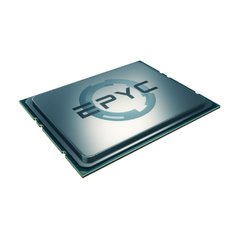AMD EPYC Naples 7251 8C/16T 2.1G 32MB 120W SP3 - PS7251BFAFWOF
Magok száma: 8 Frekvencia: 2.10 GHz GHz Max. turbó frekvencia: 2.90 GHz GHz L3 gyorsítótár memória: 32 MB MB TDP: 120 W
Több darab vásárlás esetén egyedi B2B ajánlat kérhető.
| termékkód | 204.152800 |
|---|---|
| Part number | PS7251BFV8SAF |
| EAN | 672042287871 |
| Supermicro Part No. | PSE-NPL7251-BFV8SAF |
| Gyártó | AMD |
| Elérhetőség |
Raktáron 1 db
Készlet és szállítási lehetőségek
Rožnov Raktáron
Szállítmányozási társaság Csütörtök 5. 6. legkésőbb Hétfő 9. 6. Európai fuvarcégek Csütörtök 5. 6. legkésőbb Péntek 6. 6. |
| Külső raktár | Raktáron 0 db |
| Garancia (hónap) | 24 hónap |
| Súly | 0.45 kg |
| Az ár tartalmazza az összes törvényes díjat | |
Részletes információk
AMD EPYC™
After 8 years, AMD EPYC server processors break Intel’s monopoly and manage to do so in style. Thanks to a new 7nm ZEN architecture, AMD EPYC brings up to 64-core processors with 128 threads. AMD is also coming out with unprecedented connectivity and equipment options that surprisingly surpass even the best Intel can offer for 1 and 2 CPU sockets. All EPYC processors have an 8-channel controller for DDR4 3200MHz ECC, 128 PCIe 4.0 lines and a single processor can address up to 4TB of memory.
Cores
The joint activity of processor cores is called multitasking. With multi-core processors, good core cooperation is important because it allows the entire system to be used to its maximum potential. In general, multi-core processors are often used for virtualization or computing, while processors with fewer cores and the highest possible clock rate are often used for single-thread performance-intensive applications.
Threads
The CPU threads are utilized by Hyperthreading and Multi- threading technologies, which create two virtual cores from one physical core by activating two controllers in the core to guarantee higher performance. Most modern server processors have a 1:2 ratio, e.g. 8 cores, 16 threads.
Frequency
The frequency or clock rate of a processor indicates how quickly the processor can process instructions, sort ones and zeros. Performance usually increases as the processor frequency increases, but it is not a rule. Multi-core processors tend to have a lower clock rate, but they still perform better in optimized programs. It is therefore only one aspect of choosing the right processor for a given application.
2.10 GHz
2.90 GHz
Cache
The cache exists in three layers, L1, L2 and L3 , and it is a hardware cache used by the processor to store data and thus making the subsequent data access faster. Processors with higher number of cores often have larger cache. AMD EPYC processors excel in this area, offering up to 256 MB of L3 cache .
Memory Compatibility
When choosing a processor, it is also a good idea to pay attention to the maximum memory capacity that the processor can handle. This parameter is not expandable in the future except by replacing it with a more powerful processor. Next, pay attention to the maximum frequency of the computer memory that the processor can work with — if the frequency of the computer memory is higher than this value, the processor automatically underclocks the memory modules to its maximum supported frequency.
2400 MHz
TDP
This value represents the maximum heat output that the server cooling must be able to dissipate. For processors, the heat lost is virtually equal to the energy consumed.
Paraméterek
| HBM méret | 0 |
|---|---|
| Socket | SP3 |
| Modell megnevezése | AMD EPYC |
| Generációk | AMD Naples (7001) |
| Magok száma | 8 |
| CPU frekvencia (GHz) | 2.10 |
| Max. frekvencia | 2.90 |
| Cache | 32 |
| TDP | 120 |
| Processzor termékcsalád | TypProc AMD EPYC Naples (7001) |



















